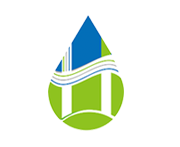Digital printing is a high-tech product integrating mechanical, computer and electronic information technology gradually formed with the continuous development of computer technology. It first appeared in the mid-1990s. It was initially used for the rapid printing of advertising paper. Combined with textile printing and dyeing technology, it brings a new concept to the textile printing and dyeing industry.
Digital inkjet printing technology is a major expansion of inkjet printing in industrial applications. When modern computer inkjet printing technology is used for textile printing, various input methods such as scanners, digital cameras, digital cameras, etc. can be used to input the required patterns into the computer digitally and printed by various drawing software (photoshop,) After being processed by the color separation system (CAD), the computer-controlled digital inkjet printing machine directly sprays the printing ink onto various fiber fabrics to print out the various patterns required. This printing technology is called digital Inkjet printing.
Digital inkjet printing can be divided into reactive dye printing, disperse dye printing, textile coating printing and acid printing according to different ink properties and processing techniques. Here I first do a discussion and study on reactive printing and everyone.
Reactive dye printing is an important type of printing in digital inkjet printing. Reactive dye printing can be used for printing on cotton and linen fiber fabrics, wool, silk, nylon fiber and so on. Reactive dye is a water-soluble dye, its reactive group reacts with the reactive group of the fiber under certain reaction conditions to form a covalent bond (ether bond or ester bond, etc.).
Compared with other types of printing, reactive dye printing has bright color, comprehensive chromatogram, good level dyeing, and high resistance to dry and wet friction. It is the main printing process for cotton, linen and silk fabrics. Due to various excellent properties of reactive dyes, the proportion of digital inkjet reactive printing in the current market is relatively large.
Reactive dye digital printing is a multi-link, multi-disciplinary overall process, which involves many disciplines such as electronic machinery, computer software, chemical engineering, color science and so on.
1. Principle of Digital Printing
Digital printing simply means that various digital patterns such as scanning, digital photos, images or computer production are processed and input into the juice computer, and then processed by the computer color separation printing system, and then driven by a dedicated software driver chip. Control of its printing system, apply external force to the dye solution, so that the dye solution is sprayed onto the fabric (or medium) through the nozzle to form a color point. Digital technology controls the nozzle's spraying and non-spraying, as well as the xY Move to form a corresponding accurate image. Form various high-precision printing products.
2. Important technical features of digital printing
A. Through practical application, I feel that digital printing has obvious advantages in the following aspects compared with traditional printing and dyeing auxiliary technology:
(A) Because the digital printing process has got rid of the traditional printing in the production process, such as color separation, drafting, film making, screen making and many other processes, which greatly shortens the production time. The way to accept patterns can be through various advanced means such as CD-ROM and E-mai1. The general proofing time does not exceed one working day, while the traditional proofing cycle is generally around one week. In addition, due to the simplification of the process, the cost of proofing is greatly reduced. Quickly understand customer needs and provide satisfactory samples.
(B) The design draft can be modified at will on the computer to fully display the designer's concept. If the printed sample customer is not satisfied, the production technician, designer, and customer can immediately re-modify on the computer, and the color formulation and pattern change. In traditional printing, once the designer's sample is confirmed, it is a tedious job to modify it. It lacks flexibility and rapid adaptability to printed patterns and color combinations.
(C) During the process of digital printing, the computer automatically memorizes the color data. In batch production, the color data remains unchanged, ensuring the consistency between small and large samples, batch to batch. Li in traditional printing, it is difficult to guarantee. This is because the batches of the pulp are different, it is difficult to ensure that the same color is completely reproduced.
(D) The traditional water color paste is not used in the high-precision printing process. The use of dyes in the printing process is "distributed on demand" by the computer. There is almost no waste of dyes and waste water, and the noise is less than 58 decibels, thus getting rid of High energy consumption and high pollution have realized the green production process.
(E) The principle of digital printing technology makes its products break the limitation of the color registration and flower length of traditional printing and dyeing production, thus greatly expanding the space of textile pattern design and improving the grade of products. If the digital printing machine uses 8 basic colors, (quaternary colors and dark blue, light red, light blue, orange) can theoretically express i6.77 million colors, especially in the printing of high-precision patterns such as color gradients and moire In fact, digital printing has unparalleled advantages in technology.
(F) Digital printing production has truly realized the production process of small batch and fast response, and the production batch is not subject to any restrictions. And because the digital printing production process all realizes the digital control of the computer, flexible production can be carried out according to the needs. For example, if the customer orders 10 square meters of decorative cloth, it will be delivered in 1 ~ 3.5 hours, which is desirable. The use of traditional printing is simply difficult to achieve.
B. Current problems with digital printing:
(1) The lack of talents affects the effective use of equipment. To use a digital printing machine well, you need to be proficient in computer software applications and machine hardware operations; you need to be familiar with the principles of printing and dyeing; at the same time, you must have a certain aesthetic foundation, which can well communicate and organically integrate the characteristics of digital printing with designer design ideas.
At present, there is no professional talent training for digital printing technology in China. Most of them are single-skilled, especially in the field of engineering and aesthetics, the problems are more prominent.
(2) High production cost. On the one hand, the main consumables-the localization rate of dye liquor is low and the price is high.



